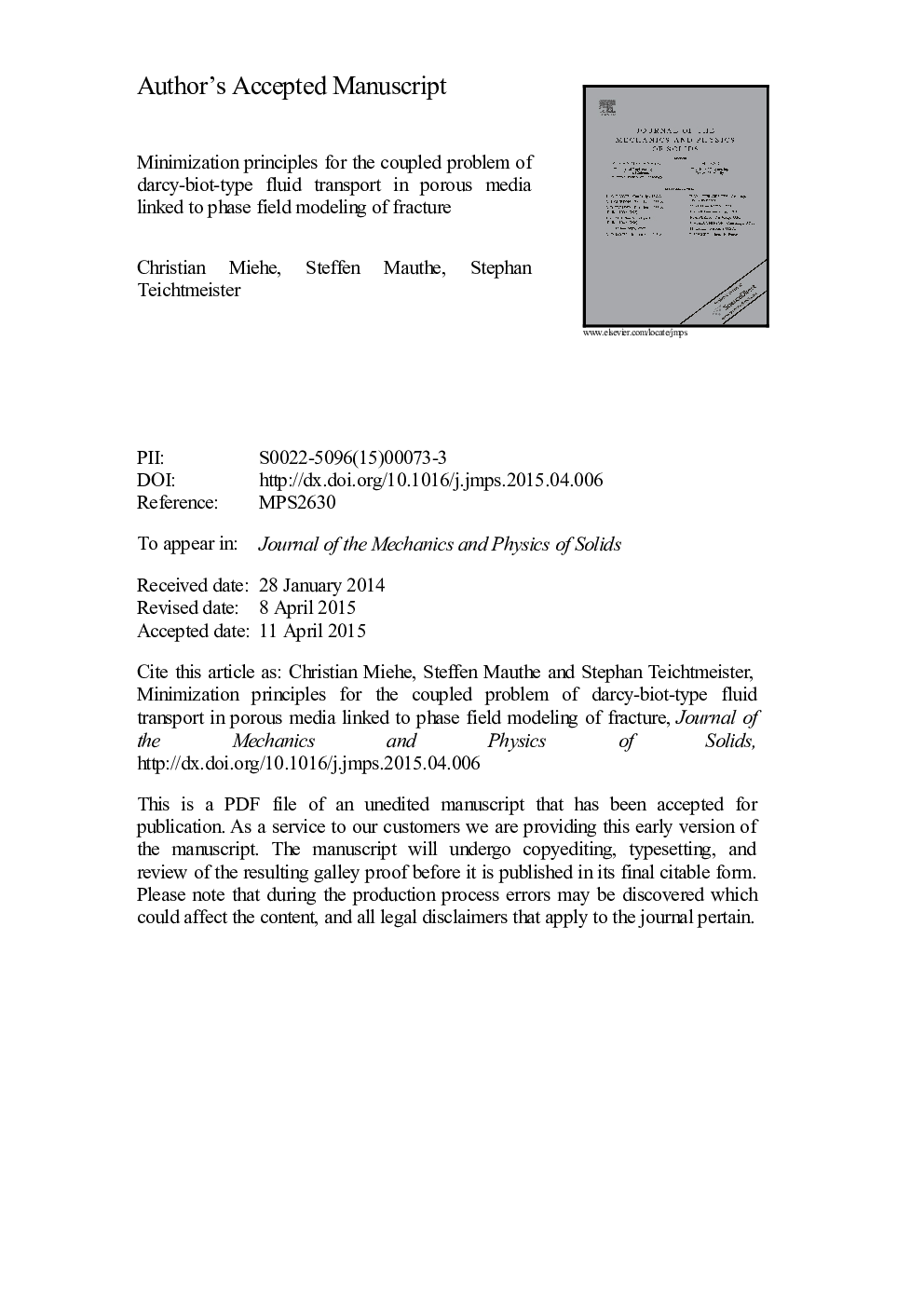| Article ID | Journal | Published Year | Pages | File Type |
|---|---|---|---|---|
| 7177994 | Journal of the Mechanics and Physics of Solids | 2015 | 36 Pages |
Abstract
This work develops new minimization and saddle point principles for the coupled problem of Darcy-Biot-type fluid transport in porous media at fracture. It shows that the quasi-static problem of elastically deforming, fluid-saturated porous media is related to a minimization principle for the evolution problem. This two-field principle determines the rate of deformation and the fluid mass flux vector. It provides a canonically compact model structure, where the stress equilibrium and the inverse Darcy's law appear as the Euler equations of a variational statement. A Legendre transformation of the dissipation potential relates the minimization principle to a characteristic three field saddle point principle, whose Euler equations determine the evolutions of deformation and fluid content as well as Darcy's law. A further geometric assumption results in modified variational principles for a simplified theory, where the fluid content is linked to the volumetric deformation. The existence of these variational principles underlines inherent symmetries of Darcy-Biot theories of porous media. This can be exploited in the numerical implementation by the construction of time- and space-discrete variational principles, which fully determine the update problems of typical time stepping schemes. Here, the proposed minimization principle for the coupled problem is advantageous with regard to a new unconstrained stable finite element design, while space discretizations of the saddle point principles are constrained by the LBB condition. The variational principles developed provide the most fundamental approach to the discretization of nonlinear fluid-structure interactions, showing symmetric systems in algebraic update procedures. They also provide an excellent starting point for extensions towards more complex problems. This is demonstrated by developing a minimization principle for a phase field description of fracture in fluid-saturated porous media. It is designed for an incorporation of alternative crack driving forces, such as a convenient criterion in terms of the effective stress. The proposed setting provides a modeling framework for the analysis of complex problems such as hydraulic fracture. This is demonstrated by a spectrum of model simulations.
Keywords
Related Topics
Physical Sciences and Engineering
Engineering
Mechanical Engineering
Authors
Christian Miehe, Steffen Mauthe, Stephan Teichtmeister,
